WHEEL ALIGNMENT SPECIFICATIONS & PROCEDURES
1988 Jeep Cherokee
1988 Wheel Alignment INTRODUCTION
PRE-ALIGNMENT
VEHICLE CHECKS
Prior to making wheel alignment adjustments, check and adjust the following items:
1) Tire pressure must be inflated to manufacturers
recommended specifications.Tires should be equal in size and type. Runout must not be excessive. Tires and wheels should be in balance.
2) Wheel bearings must be properly adjusted. Steering
linkage and suspension must not have excessive wear and/or looseness. Check for wear in tie rod ends and ball joints.
Steering
gear box must not have excessive play. Check and
adjust to
manufacturer’s specifications.
Vehicle
must be at correct ride height with full fuel
load and spare
tire in vehicle. No extra load should be on vehicle.
Vehicle
must be level with floor and with suspension
settled. Jounce
front and rear of vehicle several times and allow it
to settle
to normal ride height.
Ensure
steering wheel spokes are centered with front
wheels in
straight-ahead position, correct by shortening one tie
rod
adjusting sleeve and lengthening opposite sleeve equal
amounts.
Ensure
wheel lug nuts are tightened to torque
specifications.
DESCRIPTION
CAMBER
Camber is the inward or outward tilt of the wheel as viewed from front of vehicle. Camber is measured from centerline of vehicle. When wheel is tilted outward at top from centerline of vehicle, camber is positive. When wheel is tilted inward at top from centerline of vehicle, camber is negative. Camber is measured in degrees from vertical.
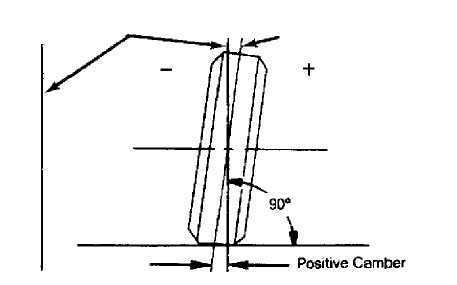
Centerline of Vehicle
1 Centerline of Wheel-*-
30409
Fig. 1: Camber Angle
CASTER
Caster is the tilting of front steering axis. This forward
or backward tilt from vertical is viewed from side of vehicle. When axis is tilted backward from vertical, caster is said to be positive, creating a trailing action on front wheels. When axis is tilted forward, caster is negative, causing a leading action on front wheels.
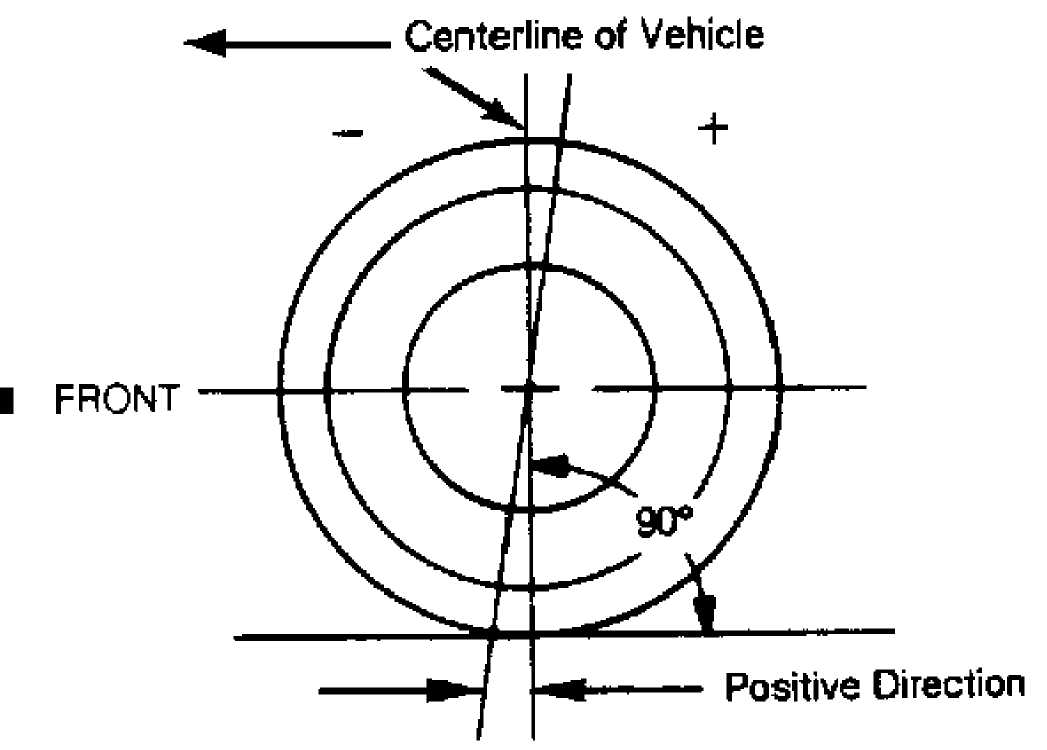
30410
Fig. 2: Caster Angle
TOE
Toe is the measured difference in inches of distance between the front edge of the tires and the rear edge of the tires at spindle height. Toe can be measured in inches or degrees.
ADJUSTMENT
TOE
Measure
toe with front wheels straight-ahead and steering
wheel locked in
a centered position. Adjust toe by loosening clamps
and adjusting
sleeve or adjusting ends on right and left tie rods
equally and
in opposite directions to maintain steering wheel in
centered
position.
If
steering wheel is not centered to begin with,
determine which
tire assembly is toed in or out more than the other
and compensate adjustment more to that side to center steering wheel. A couple of tries will probably be necessary to properly center steering wheel.
3) When tightening clamps, make sure that clamp bolts are positioned so there will be no interference with other parts throughout entire travel of steering linkage.
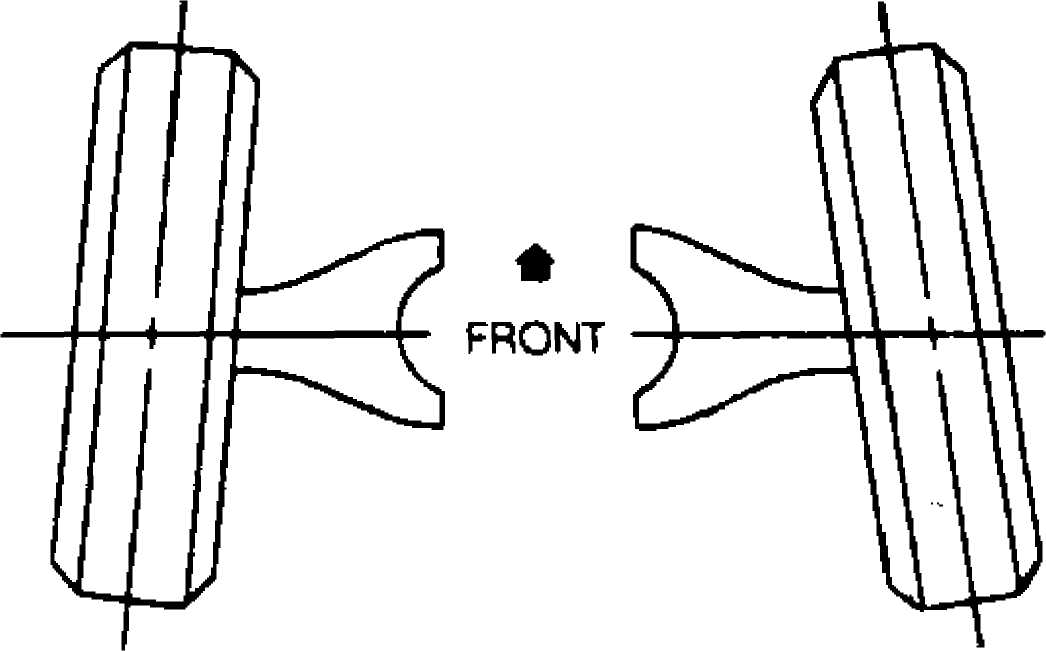
30412
Fig. 3: Wheel Toe
To adjust, turn sleeves an equal amount in opposite directions.
TOE-OUT ON TURNS
This is a
check for bent or damaged parts, and not a
service adjustment.
With caster, camber and toe-in properly adjusted,
check toe-out
with weight of vehicle on wheels.
Use
full-floating turn table under each wheel. Turn left
wheel
in 20 degrees on scale of turn table and
read scale of turn
table on right wheel. Reading should be within
2 degrees of left
wheel.
Repeat test for right wheel.
Incorrect
readings of toe-out generally indicates a bent
steering arm.
Replace arm and recheck wheel alignment adjustments. Do
not
attempt to correct by straightening parts.
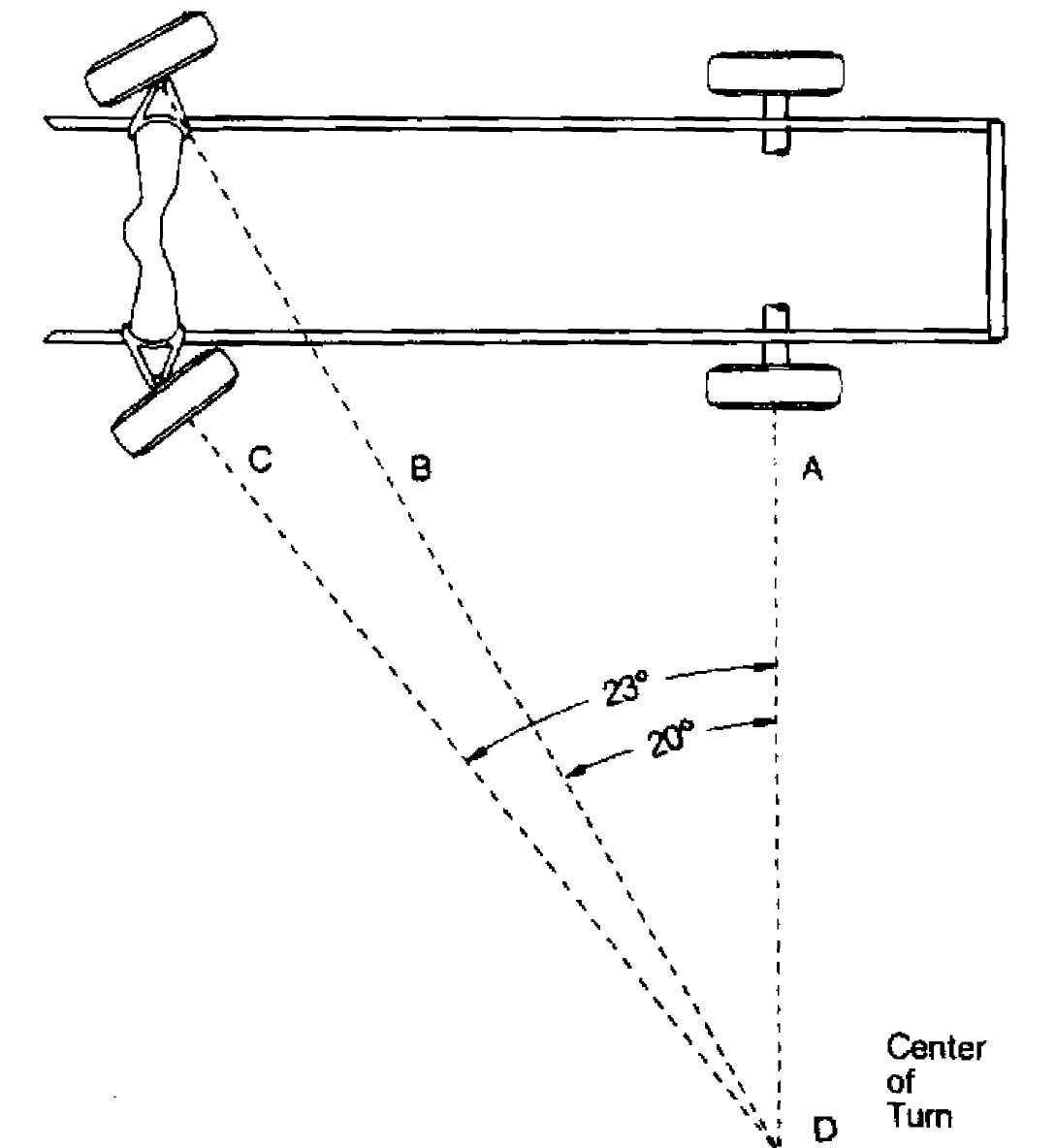
30413
Fig. 4: Wheel Toe-Out on Turns
STEERING AXIS INCLINATION
1) This is a check for bent or damaged parts, and not a
service adjustment. Vehicle must be level, both crosswise and lengthwise. Camber should be properly adjusted.
If camber
cannot be brought within limits and steering
axis inclination is
correct, steering knuckle is bent. If camber and
steering axis
inclination are both incorrect by approximately the
same amount,
upper and lower control arms are bent.
Replace
parts and recheck all wheel alignment
adjustments. Do not attempt
to correct by straightening parts.
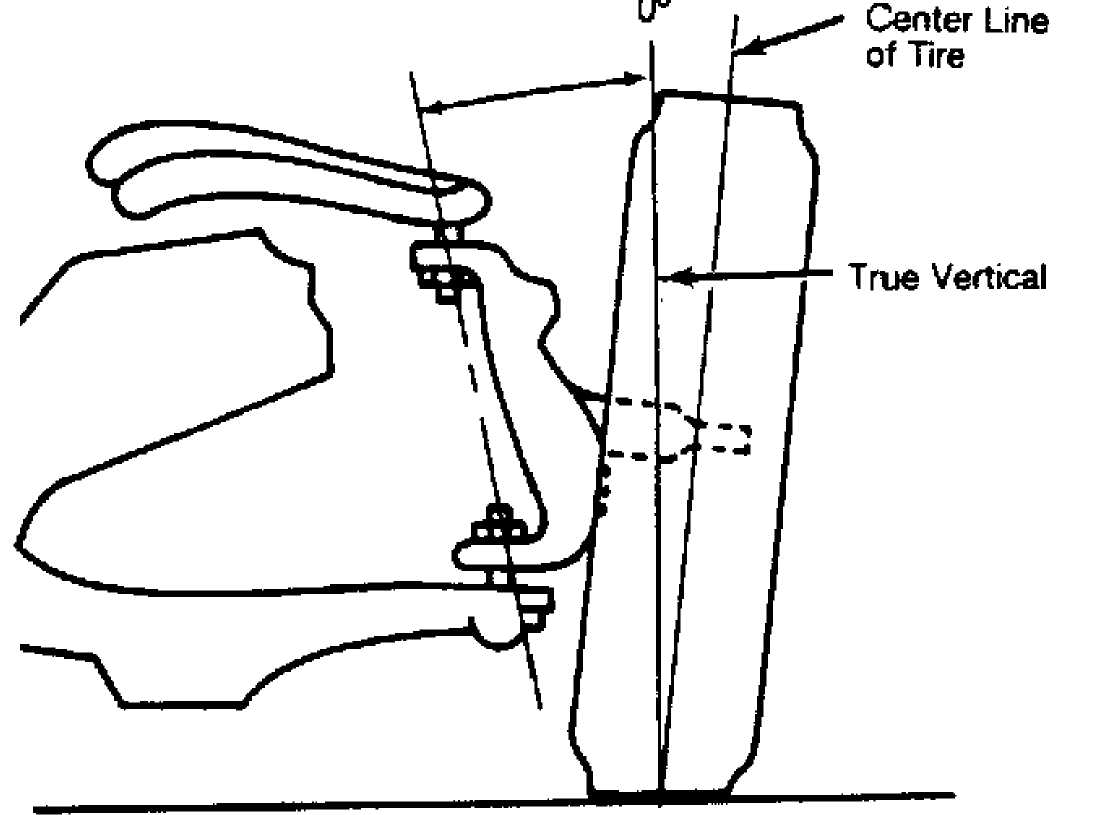 Steering
Axis Inclination
Steering
Axis Inclination
30414
Fig. 5: Steering Axis Inclination
TORQUE SPECIFICATIONS
WHEEL LUG NUT TORQUE SPECIFICATIONS TABLE Application
Ft. Lbs. (N.m)
Grand Wagoneer 85 (115)
All Other Models 75 (102)
ALIGNMENT SPECIFICATIONS
WHEEL ALIGNMENT SPECIFICATIONS TABLE
 Application
Application
Specification
Cherokee, Comanche,
Wrangler & Wagoneer
Ride Height in Inches
Adjustment Procedures
Camber in Degrees (Fraction) -1/2 to 1/2
Camber in Degrees (Decimal) -0.50 to 0.50
Caster in Degrees (Fraction) 7 to 8
Caster in Degrees (Decimal) 7.0 to 8.0
Toe-In in Inches (Fraction) 1/32 to 1/32
Toe-In in Inches (Decimal) 0.031 to 0.031
Toe-In in Degrees (Fraction) 1/16 to 1/16
Toe-In in Degrees (Decimal) 0.063 to 0.063
Toe-Out on Turns
Inner NS
Outer NS
Steering Axis Inclination (SAI) 8 1/2 °
Grand Wagoneer
Ride Height in Inches
Adjustment Procedures
Camber in Degrees (Fraction) 0 to 1/2
Camber in Degrees (Decimal) 0 to 0.5
Caster in Degrees (Fraction) 4 to 5
Caster in Degrees (Decimal) 4.0 to 5.0
Toe-In in Inches (Fraction) 3/64 to 3/32
Toe-In in Inches (Decimal) 0.047 to 0.094
Toe-In in Degrees (Fraction) 3/32 to 3/16
Toe-In in Degrees (Decimal) 0.094 to 0.188
Toe-Out on Turns
Inner NS
Outer NS
Steering Axis Inclination (SAI) 8 1/2 °
NS - Information not available from manufacturer.
 RIDING
HEIGHT SPECIFICATIONS
RIDING
HEIGHT SPECIFICATIONS
Inflate tires to proper air pressure. Specifications can be found on door pillar or in glove box. Cargo compartment must by empty. Fuel tank should be full. Bounce vehicle up and down to normalize ride height. Ride height specifications in regard to setting camber and caster are not provided by the manufacturer.